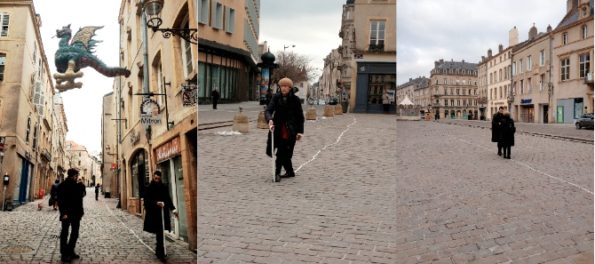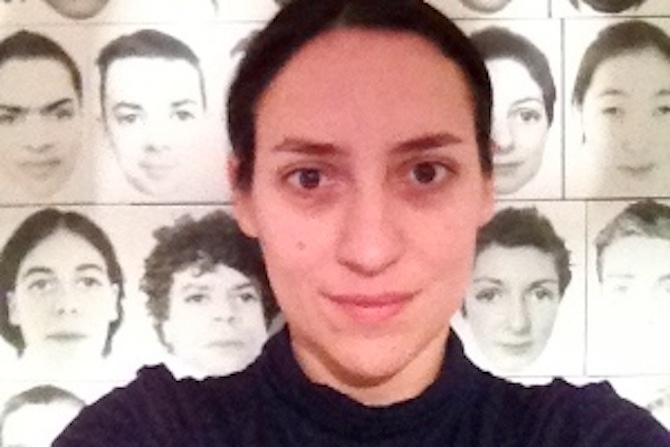Search
To search for an exact match, type the word or phrase you want in quotation marks.
A*DESK has been offering since 2002 contents about criticism and contemporary art. A*DESK has become consolidated thanks to all those who have believed in the project, all those who have followed us, debating, participating and collaborating. Many people have collaborated with A*DESK, and continue to do so. Their efforts, knowledge and belief in the project are what make it grow internationally. At A*DESK we have also generated work for over one hundred professionals in culture, from small collaborations with reviews and classes, to more prolonged and intense collaborations.
At A*DESK we believe in the need for free and universal access to culture and knowledge. We want to carry on being independent, remaining open to more ideas and opinions. If you believe in A*DESK, we need your backing to be able to continue. You can now participate in the project by supporting it. You can choose how much you want to contribute to the project.
You can decide how much you want to bring to the project.

“The line doesn’t exist in the observable world. It is a convention, a cultural construct.” [[Conferència La vie des Lignes, Tim Ingold, Centre Pompidou-Metz, 20-02-2013)]]
The most active and authentic line, be it drawn in the air or on paper, is the one born from a point that is free to travel without limitations towards wherever it wants to go, in its own time. Following it, our eyes follow the line that has been traced by the hand. Referring to this idea of Paul Klee, the anthropologist Tim Ingold introduces in his book “Lines. A Brief History of Lines” a dichotomy between this type of line and those that establish a trajectory, that go from point a to point b, according time based criteria.
A year ago we experienced in the Centre Pompidou-Metz, a montage that lasted two months, where an orchestra of 80 peopled intervened to materialise one of Sol LeWitt’s scores, thereby making it possible to see, until July of that year, 32 black and white wall drawings in the Galerie 2 (“Sol LeWitt: Wall drawings from 1968 to 2007”, curated by Béatrice Gross). In the meantime, a new exhibition has opened its doors on the first floor, “Une brève histoire de lignes”, curated by Hélène Guenin and Christophe Briend, that, going beyond a genealogy of drawing from 1925 until today, explores the incidences of the line in our everyday environment. Inspired in the aforementioned work with the same name by Tim Ingold, it includes a selection of some 220 works, by artists such as Vera Molnar, Duchamp, Kandinsky and Penone.
Esther Ferrer carried out two interventions on the 16 and 17 February. First, in her performance “Parcourir un carré” she traversed the gallery of Sol LeWitt stopping at each “alcove”. Armed with 4 letters (A, B, C, D) and a score of combinations of 3, 4, 5, 6… elements, she traced a square, leaving no other trace than that of its memory, in front of an audience in whose presence she recited the letters, who closely following her paced announcements, moving as a consequence, paying close attention to the success and ultimately breaks in her concentration. A fine transition, from the judging of the result to the complicity of the process. Intimate gazes between the visitor and the artist drew questions within this square, the sphere of influence of which went beyond the geometry and causal movements of a Turing machine, thereby leading to an event with subtle and silent accidents.
On the following day, another action (“Se hace camino al andar”) began at two different points of the city of Metz. On the one hand, Esther Ferrer took as her point of departure the exhibition “Une brève histoire de lignes” and, on the other, Arthur Debert interpreted the action, setting out from the Frac Lorraine, where other performances were taking place within the frame of the exhibition “Les mondes nomades et autres variations autour de la ligne”, curated by Béatrice Josse and Raúl (Rulfo) Álvarez with work by Marco Godinho, Ceal Floyer, Vera Molnar, Torres García, Marina Abramovic, amongst others.
So, as I said, with two points of departure, some thirty rolls of masking tape in a rucksack, they traced a path that would culminate with their encounter. Neither invited nor rejected, a spontaneous public, familiar with and owners of the streets through which they pass each Sunday, crossed paths with a person who literally left an imprint. In reality, two people walk along the white line that they draw: a line that indicates from where they have come, but not where they are going. While the walker remains constant with his task, some approach to say that they have seen his colleague under the bridge, on the other side of the city, saying “keep going, good luck, not long now till you meet,”; others look on curious; the centre’s security guard asks who is going to peel off the tape the next day; one neighbour is indignant on seeing a white line at the entrance to his house; a poodle sniffs at the line…The conclusion is their encounter in the old place Saint Louis: a shaking of hands and Machado in four languages: the road is made by walking. Actors or extras, they all form part of score that is being written, the melody of which is drawn step by step; disappearing into thin air so quickly that we don’t remember if we have heard it. As one knows: ephemeral present, constructed memory.
The two typologies of line evoked by Tim Ingold imply two ways of living and being. If the line only exists between two points, the result is a network, where there is a clear difference between things and their connections. The journey in the network is typically that of transportation: the passenger seeks to travel the distance between two well defined places in a minimum amount of time and finds himself nowhere while moving from A a B. On the other hand, if the distinction between the points and lines disappears, if things are not distinguished from the relations between them, we obtain a meshwork, where the path no longer has the function of locating people. The itinerant walker follows his own path and while he carries on his path will always be present. Wandering he maintains an attitude that goes beyond connection, a communication that goes beyond correspondence, that leaves space for interaction.
A score before and after, the Actions by Esther Ferrer are the basic rules of a game, a concert with its own variations. These lead to listening, watching and expectation, elements that stealthily circumnavigate all the senses, freeing the event of all theatricality. A simple, significant process, with no diagnosis. A concert in which the score survives at a changing tempo ; where the presence of the spectator (volunteer, voluntarily or by chance) modifies what is taking place. Active lines.

“After producing so many exhibitions they say that I’m a backstage militant and that the peak of living in the wings is that one ends up being as implicated and involved as those on the front line. Obsessed with the blurring of frontiers, criticism is nothing more than looking and moving forward in the constant questioning of everything that is so well classified on my spread-sheet. Lines, smudges and secondary characters.”
"A desk is a dangerous place from which to watch the world" (John Le Carré)